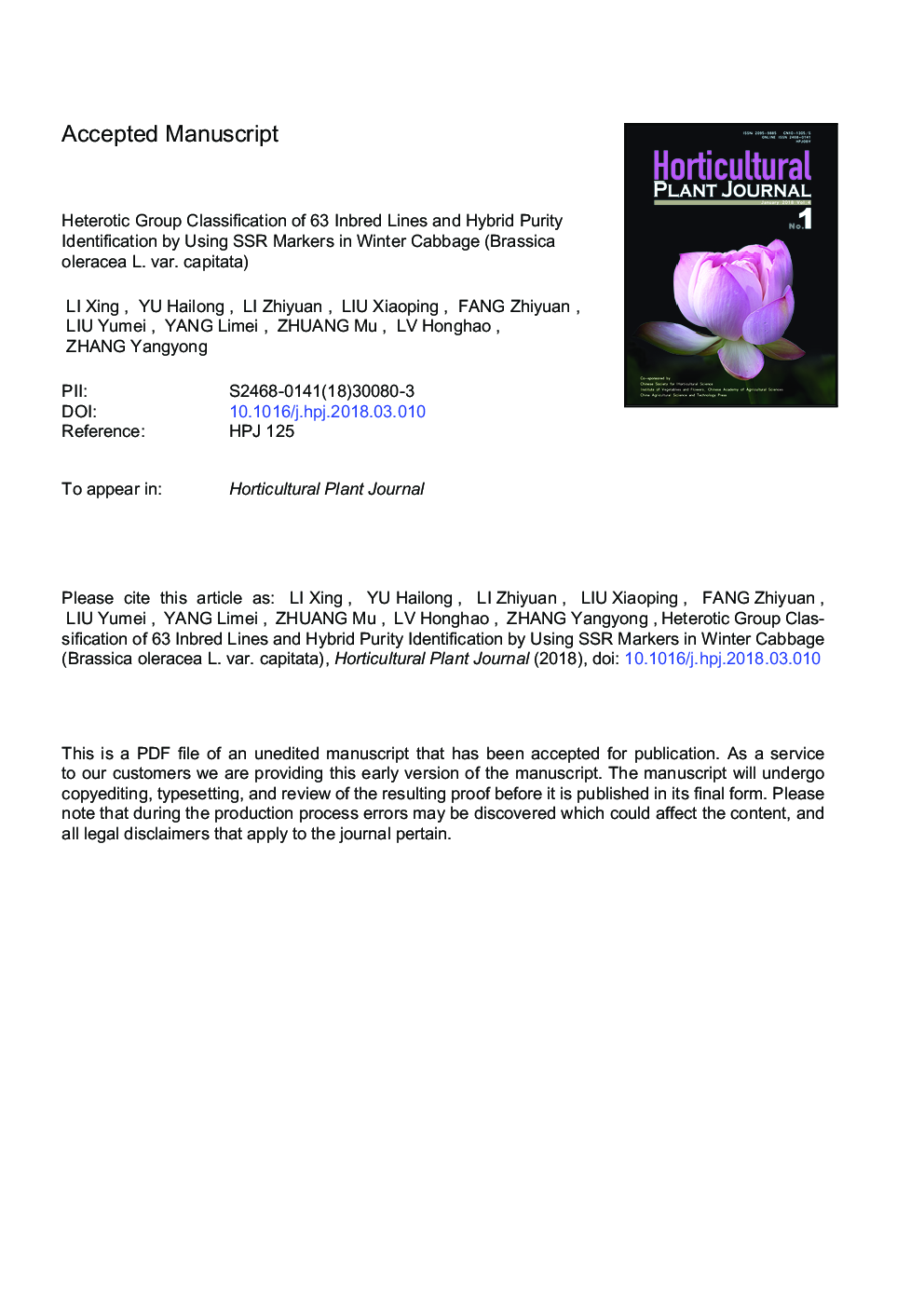| Article ID | Journal | Published Year | Pages | File Type |
|---|---|---|---|---|
| 8892154 | Horticultural Plant Journal | 2018 | 13 Pages |
Abstract
Winter cabbage is an important crop cultivated through winter in the region near the Yangtze River, enabling the supply of fresh cabbage there at that time of year. However, a problem has emerged regarding the newly developed parents of winter cabbage, which is completely different from spring and autumn cabbage, namely, how to combine these parents to breed an elite hybrid. To classify the heterotic groups and improve the efficiency of parent selection in winter cabbage breeding, 20 polymorphic SSR markers were selected to screen 63 winter cabbage inbred lines. Seventeen pairs among the 20 SSR markers amplified polymorphic bands. These primers amplified two to six bands, with an average of 2.8 bands per primer, and a total of 47 polymorphic bands were generated in the 63 inbred lines. These lines included flat-headed morphotype and round-headed morphotype, thus they were separately classified into heterotic groups based on the SSR markers. The flat-headed morphotype contained 21 inbred lines and was classified into three heterotic groups, named Hanchun 4, Jiali, and Dongsheng, in accordance with the representative germplasm contained in each group. The round-headed morphotype contained 42 inbred lines and was classified into five heterotic groups, named Parte, Bejo1039, YK-143, SCA002, and Golden B90. Meanwhile, parent analysis of 20 developed elite combinations showed that their parents were all distributed in different heterotic groups, indicating that the group classification was reasonable, which can provide a basis for further parent selection in winter cabbage breeding. Furthermore, polymorphic SSR primers were successfully used to identify the hybrid purity of three elite varieties.
Keywords
Related Topics
Life Sciences
Agricultural and Biological Sciences
Forestry
Authors
Xing LI, Hailong YU, Zhiyuan LI, Xiaoping LIU, Zhiyuan FANG, Yumei LIU, Limei YANG, Mu ZHUANG, Honghao LV, Yangyong ZHANG,
